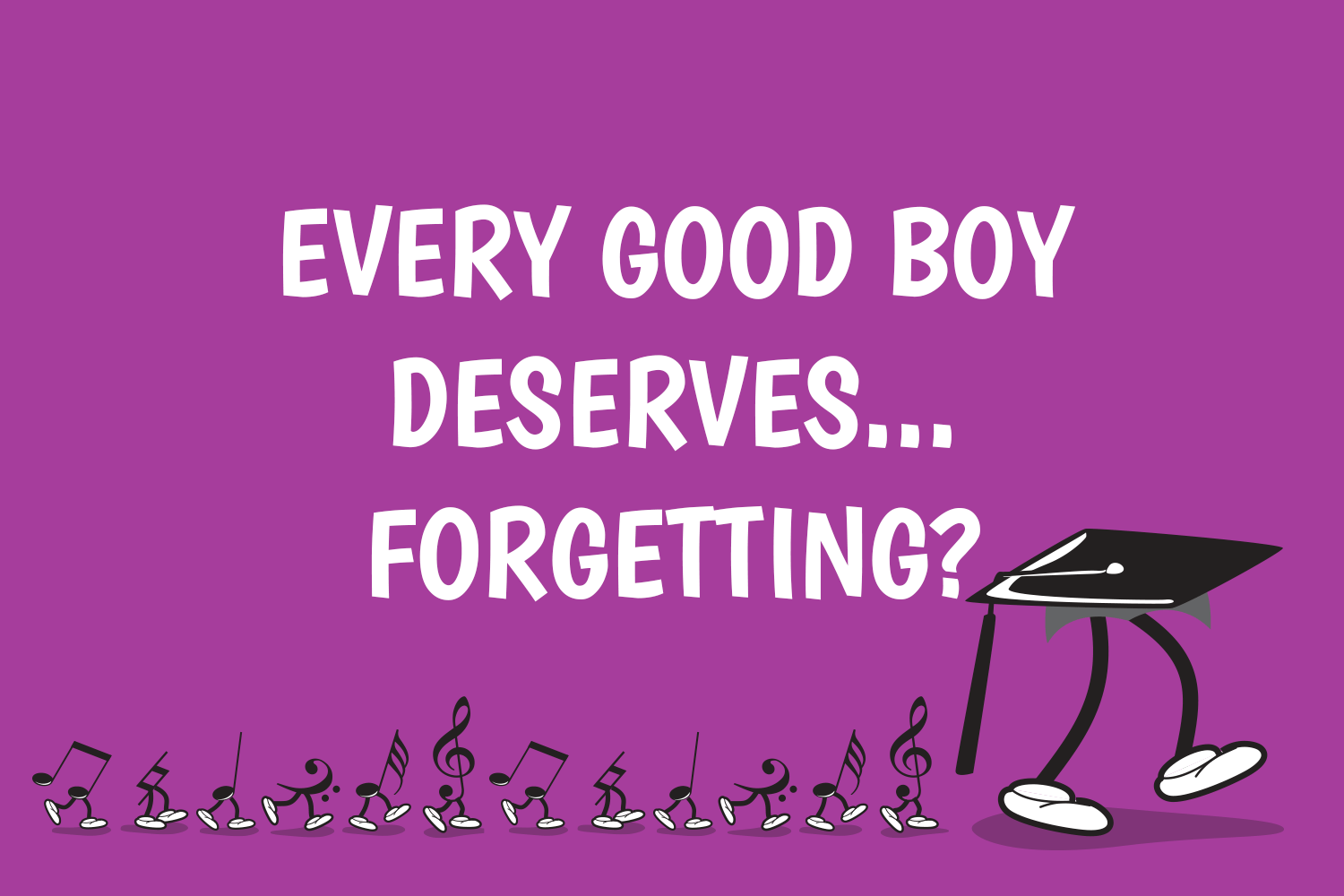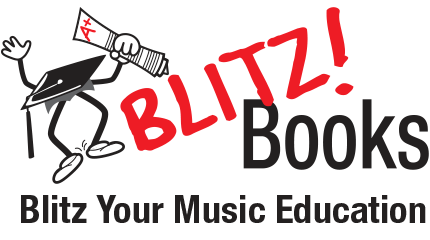Every Good Boy Deserves… Forgetting?

Learning to read music seems synonymous with Every Good Boy Deserves Fruit. But are mnemonics really the quickest and easiest way to learn letter names?
EDIT: The following is a guest post by my colleague Leah Coutts, written a long time ago (2010!), however, her original videos that appeared in this post have unfortunately disappeared into the ethernet. These snippets have been replaced by footage of me doing this in Chicago at NCKP 2017 (albeit with not great sound), and her text has been edited slightly. Finally, at the end of the blog you can view a bonus video of the full demonstration, from the Piano Teacher Summit in July 2022 (sponsored by Yamaha and Hal Leonard), and there is also a link to an awesome podcast episode with myself, Elissa Milne and James Rotheram.
And now, from Leah:
I attended a BlitzBooks Workshop recently, with the extremely knowledgeable and enthusiastic Samantha Coates.
In one of her very simple activities, Samantha proves that there’s a better way to learn to read music than by using mnemonics (such as ‘Every Good Boy Deserves Fruit’).
- A set of music flash cards with the all the notes on the staff – no ledger lines
- A stop watch or timer
I’ll give you instructions below on how to participate.
Learning to read music for the first time
Samantha changed the musical letter names, putting every teacher in the room in the
position of a student learning to read music for the first time. Below are the mnemonics that
she taught us:
Treble clef lines

Treble clef spaces

Bass clef lines

Bass clef spaces

After repeating the rhymes out loud a few times, Samantha timed us for 1 minute to see how
many note we could name. We could only name 3! Everyone was confused and it was quite funny.
From NCKP 2019:
Your turn
Spend a minute repeating the mnemonics out loud, and then
turn away from this page. Set your timer for one minute, and see how many flash cards you
can name using the rhymes.
How did you go? Write your score down – you’ll need it at the end.
The Alternative
What if, instead of all those mnemonics to remember, you have one fixed reference point per
clef and just work up the alphabet from there? Taking away all of those rhymes used above,
and replacing them with the alphabet looks like this:


Your turn
Before I tell you the difference this made in the workshop, try it out for yourself. Once
you’ve spent a minute looking where the fixed reference point ‘H’ can be found, turn away
from this page. Set your timer for one minute again, and see how many flash cards you can
name this time.
How did you go? Write your score down next to your previous and compare the two. Did you
do better the second time?
What happened in the workshop
In the workshop, we tripled our score! From 3 flashcards correct with rhymes, to 9 correct
with one fixed reference point and the alphabet.
From NCKP 2019 (where the score actually QUADRUPLED, not tripled!):
This is a great activity to do with parents on information nights, or in group situations
to demonstrate how they can better help their child at home.
Are you convinced?
I’d love to hear your experiences with the activity. What were your scores? How do you
teach note names to your students? Please comment below and share in the fun.
I’d like to say a big “Thank you!” to Samantha for allowing me to share her activity with
you. If you ever have the opportunity to attend one of her workshops, I highly recommend
them. I guarantee you’ll have so much fun and learn some great activities to use in
lessons with your students!
EDIT: BONUS VIDEO
Here I am presenting this game at Yamaha and Hal Leonard’s 2022 Piano Teacher Summit!
EDIT: BONUS PODCAST

Pingback: NCKP 2017 (1): Wednesday Pre-Conference Seminars
Pingback: NCKP 2017 (1): Wednesday Pre-Conference Seminars | Caroline Banks
Pingback: NCKP 2017 (1): Wednesday Pre-Conference Seminars | Maria Candelaria Rosales
Fabulous. Trouble with “mnemonics” is you have to learn a whole lot of new information. I still have the alphabet etched in my visual memory and can start from an letter and progress. I prefer my students simply to learn the note names directly in combination with recognising their corresponding piano key.
This is on point. I’m new to the piano in the last 12 months as an adult and I can confirm that mnemonics are useless and worked out that I just need to commit to remembering notes by rote so you have them for instant reference. I put mnemonics in the same bucket as people who work out major scales as TTSTTTS instead of just committing them to memory. The major weakness with any mnemonic is that you need to go through a process to work out the result but you certainly don’t have the time while playing to do this. FWIW, I committed to learning 1 new note per piece I learned and that served me well. Also, the value of committing the order of sharps and flats to memory is severely underrated IMO.
I didn’t think you would convince me, but you have.
Ah Linda, you’ve made my day 🙂
i think learning through mnemonics is ok if the knowledge gained is purely for theoretical purposes. but if the knowledge to be gained is tied to a specific practical and physical skill like sight reading and actual playing then doing away with mnemonics is fine.